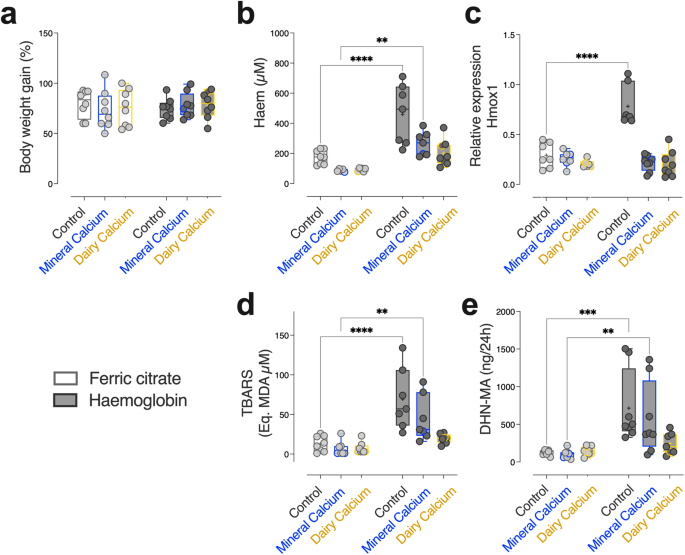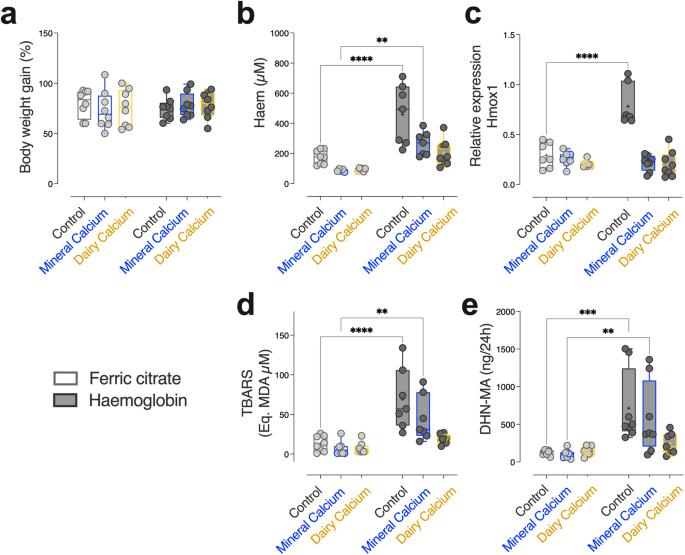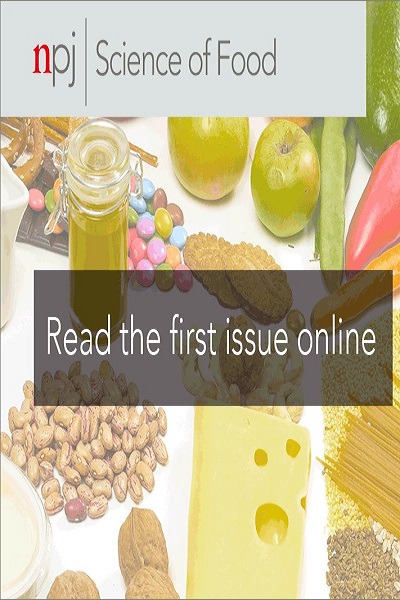富含钙的乳制品基质比矿物质钙更能防止雄性大鼠结肠管腔血液引起的改变。
IF 6.3
1区 农林科学
Q1 FOOD SCIENCE & TECHNOLOGY
引用次数: 0
摘要
肉类中的血红蛋白含量一直与结肠直肠癌风险的增加有关,而钙可能起到化学预防的作用。通过使用啮齿动物模型,钙盐已被证明可通过限制肠腔血红素铁的生物利用率,防止促进血红素诱发和红肉诱发的结直肠癌。因此,本研究旨在比较以钙盐或乳制品基质形式提供的膳食钙对高血铁摄入量或非血铁摄入量引起的肠道平衡紊乱的影响。研究人员使用费舍尔 344 大鼠进行了为期 3 周的干预研究。与富含柠檬酸铁的膳食相比,富含血红蛋白的膳食会导致粪便、粘膜和尿液中与脂过氧化相关的生物标志物增加,这是因为肠腔内血红蛋白铁的生物利用率较高。这种氧化还原失衡与粪便微生物菌群失调有关。在富含血红蛋白的膳食中添加钙可限制血红素铁的生物利用度,并抵消氧化还原失衡。数据整合显示,血红蛋白诱导的脂过氧化产物与属于肽球菌科、Eubacterium coprostanoligenes 组和双歧杆菌科的细菌群落之间存在相关性。这种综合方法证明了乳制品基质作为膳食钙载体的益处,可以抵消肉类消费的有害副作用。本文章由计算机程序翻译,如有差异,请以英文原文为准。


Calcium-rich dairy matrix protects better than mineral calcium against colonic luminal haem-induced alterations in male rats
The haemoglobin content in meat is consistently associated with an increased risk of colorectal cancer, whereas calcium may play a role as a chemopreventive agent. Using rodent models, calcium salts have been shown to prevent the promotion of haem-induced and red meat-induced colorectal carcinogenesis by limiting the bioavailability of the gut luminal haem iron. Therefore, this study aimed to compare impacts of dietary calcium provided as calcium salts or dairy matrix on gut homoeostasis perturbations by high haeminic or non-haeminic iron intakes. A 3-week intervention study was conducted using Fischer 344 rats. Compared to the ferric citrate-enriched diet, the haemoglobin-enriched diet led to increased faecal, mucosal, and urinary lipoperoxidation-related biomarkers, resulting from higher gut luminal haem iron bioavailability. This redox imbalance was associated to a dysbiosis of faecal microbiota. The addition of calcium to haemoglobin-enriched diets limited haem iron bioavailability and counteracted redox imbalance, with improved preventive efficacy when calcium was provided in dairy matrix. Data integration revealed correlations between haem-induced lipoperoxidation products and bacterial communities belonging to Peptococcaceae, Eubacterium coprostanoligenes group, and Bifidobacteriaceae. This integrated approach provides evidence of the benefits of dairy matrix as a dietary calcium vehicle to counteract the deleterious side-effects of meat consumption.
求助全文
通过发布文献求助,成功后即可免费获取论文全文。
去求助
来源期刊

NPJ Science of Food
FOOD SCIENCE & TECHNOLOGY-
CiteScore
7.50
自引率
1.60%
发文量
53
期刊介绍:
npj Science of Food is an online-only and open access journal publishes high-quality, high-impact papers related to food safety, security, integrated production, processing and packaging, the changes and interactions of food components, and the influence on health and wellness properties of food. The journal will support fundamental studies that advance the science of food beyond the classic focus on processing, thereby addressing basic inquiries around food from the public and industry. It will also support research that might result in innovation of technologies and products that are public-friendly while promoting the United Nations sustainable development goals.
 求助内容:
求助内容: 应助结果提醒方式:
应助结果提醒方式:


